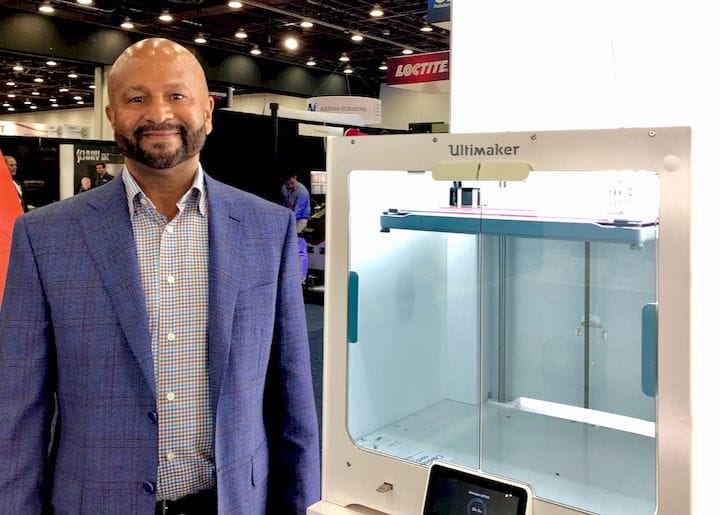![Ultimaker’s Jamie Howard [Source: Fabbaloo]](https://fabbaloo.com/wp-content/uploads/2020/05/image-asset_img_5eb096cd80bc4.jpg)
We spoke with Ultimaker’s USA chief, Jamie Howard, to learn more about the company’s strategy.
Ultimaker has undergone an incredibly significant transformation from their humble origins as a DIY 3D printer. Today we find their operation to be of very large size, at least in the world of 3D printing, and they could not be more different from their beginnings.
Their market today is squarely the professional and manufacturing market, composed of industrial designers, architects, engineers, manufacturing specialists and more. These professions frequently involve using 3D printers in office settings. It seems that Ultimaker, like several other 3D printer manufacturers, sees challenges for some companies in efficiently using 3D printing gear.
They believe the answer to this challenge is to remove barriers to using 3D printing. One of the technical initiatives they’ve undertaken to do this is their powerful material profile database. This system matches their equipment with specific branded third party filament materials to ensure users, particularly new users, have a greatly increased chance of 3D print jobs succeeding.
Howard says the company is measuring their progress differently. In the past, 2D paper printer vendors would use a standard metric for office use of equipment: “people per printer”. This metric assumes that each person knows how to print and likely prints an average quantity of documents.
That just isn’t the case in 3D printing, at least not yet. In many cases users are still discovering what can and should be printed, and thus the old metrics are no longer relevant, at least in Ultimaker’s view.
Instead, Howard suggests they are using a very different metric: Applications per printer.
This new metric focuses on the diversity of usage, rather than the quantity of usage. They, and I, believe this is a far more important characteristic at this stage in the evolution of 3D printing technology. It should stay important until designs are routinely leveraging 3D print advantages, and that’s definitely not the case today.
Ultimaker recommends larger corporate customers set up highly focused design centers that can concentrate the otherwise thin 3D print expertise typically found in an organization. By using networking, it is possible for distant designers to submit proposed prints to the design center for review and adjustment. Through an iterative process, it’s likely that an entire enterprise can gradually learn the tricks of the trade.
The ecosystem developed by Ultimaker includes a focus on materials, profiles and services.
Ultimaker strongly believes in this ecosystem approach, and has in fact been training their resellers to be aware of it.
I believe Ultimaker is on the right track with this strategy, as it directly addresses the biggest barrier to 3D print adoption: knowing how to use it. So far, it seems their strategy is working, as their growth has been significant.
Via Ultimaker











